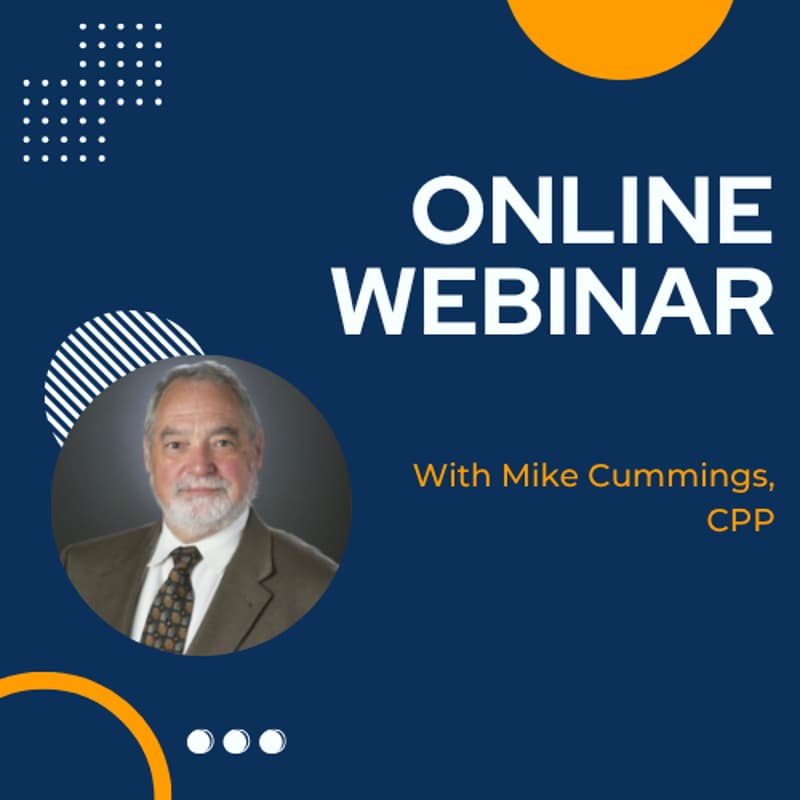

Understanding and preparing for Active Shooters in Hospitals
It is well known that the healthcare environment is one that experiences the highest frequency of workplace violence and has had this distinction, for a number of years, according to OSHA and other record keeping organizations on both the state and national level. This webinar will explore the unique challenges facing the most vulnerable of critical infrastructures including the open environment and the emotional climate frequently in play. Specific areas of exploration will include; understanding the specific vulnerabilities in the healthcare environment, planning for all phases of an active shooter situations both preventative and responsive, processes for education and training for all personnel including depth frequency and competency assessment, the importance of maintaining crucial equipment, the role of communications before, during and after an event, and the leadership and planning structure and participants who should be considered as the leadership team for planning and evaluating the program and the specific roles of each team member. In addition, there will be a review of elements related to how to utilize assessment tools to document, assess and communicate any insights learned from drills, false alarms or real situations experienced in your facility or other healthcare facilities.
Learning Objectives
How to use existing internal emergency structures and processes to reduce redundancy and improve efficiency to reduce the impact
How to establish processes to detect potential active shooter situations before they happen
How communications strategies and tactics can be used before, during and after a situation to reduce the impact
The role that competency based training and educations for all staff is crucial
How to incorporate equipment maintenance and testing can impact the outcome of an active shooter event
How pre-incident coordination with outside agencies is essential in minimizing impact of an event
How specific role delineation helps reduce confusion and improve efficiency in real situations
Areas Covered in the Session
Map out safe exit routes from your reception area - and know exactly how to reach them if shots are fired
Understand every type of active shooter scenario and how to prepare for each one
Identify everyday objects you can turn into improvised defensive tools in an instant
Spot early warning signs and behaviours that could signal danger - before it turns deadly
Use smart, proven de-escalation phrases to help front desk staff prevent violence altogether
Recognize when an agitated patient or visitor might cross the line - and know the right next steps
Set up a simple but effective threat reporting system to intercept threats before they unfold
Read red flags at the front desk that point to possible violence - and respond immediately and safely
Make clear decisions on when a threat crosses the line and it’s time to call law enforcement
Apply practical threat assessment methods to uncover high-risk areas and fix weak spots fast
Strengthen staff confidence with real-world tactics and tools that could save lives
Understand what triggers aggression and how to defuse tense situations calmly and safely
And gain proven insights you can put to work right away
Live Q&A Session
Suggested Attendees
Senior Leaders of the Organization with Responsibility for Emergency Planning, Security and Workplace Violence Prevention
Security Leaders
Leaders in the Emergency Response Space
Communications Leaders, Including Switchboard Functions
Clinical Leaders in Key Departments (ED, ICU, Med Surg, Outpatient Services)
Risk Managers
Nursing Leadership and Frontline Nursing Staff
Human Resources and Employee Relations Professionals
Facility and Operations Managers
Environmental Services Supervisors
Behavioural Health Specialists and Psychiatric Staff
Legal and Compliance Officers
Patient Safety Officers
Training and Education Coordinators
Volunteer Coordinators and Staff
Public Relations and Communications Teams
Security Contractors and Consultants
Clinic and Ambulatory Care Managers
Union Representatives (Where Applicable)
Board Members and Trustees Involved in Risk Oversight
About the Presenter
Mr. Cummings has practiced in the field of healthcare security for over 40 years, leading the loss prevention/security for the largest healthcare provider in Wisconsin team for over 33 years. He has held the CPP Certification (Board Certified in Security Management for 39 years. He holds a Bachelors Degree From Marquette University and a Masters in Business and Organizational Security Management from Webster University. He has been a member of IAHSS and served in volunteer roles since 1985 and in ASIS International since 1976. He has been a frequent presenter at security conferences and has published many articles on healthcare security topics.
Additional Information
System Requirement:
Internet Speed: Preferably above 1 MBPS
Headset: Any decent headset and microphone which can be used to hear clearly
Live Course Cancellation Policy: If for any reason Skillacquire need to cancel this program, Skillacquire will notify participants by email of the cancellation no less than 24 hours prior to the expected start time.
For more information, you can reach out to the below contact:
Toll-Free No: 1-302-444-0162
Email: [email protected]